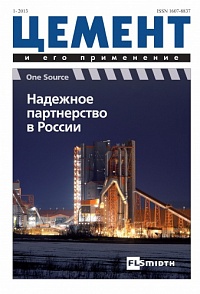Rip&Load technology of the international company Caterpillar is described, which allows to rip and excavate strong rock without blasting, and the hydraulic excavator CAT-390DL used for the purpose as the primary mining machine. The advantages of this technology implemen...
The factors that influence NOx emissions when various fuels are burned in cement rotary kilns are described, including alternative fuels. The performance of FLEXIFLAME® burner from GRECO Combustion Systems, Brazil, characterized by low NOx emissions, is analyzed.
A history of the development of the Novaflam® burner by the French company Fives Pillard is described, together with the approaches used in the design, the design of the burner and its benefits, in particular those related to burning of alternative fuels. Due to a high ...
The issues of using refractory materials from Höganäs Bjuf AB (Sweden) and lining equipment from Bricking Solutions (USA) at the Novo-Spassky cement plant of OAO Spassk-Cement in 2011—2013 are discussed. The example of Production Line 1 shows t...
The operation of a continuous X-ray diffraction analysis real-time system at the cement plant of Buzzi Unicem in Festus (MO), United States, is examined. Information on the issues addressed with the help of this system is offered.
The «fate» of iron during the hydration of cement is investigated by thermodynamic calculations and compared to the results of an experimental study using an OPC and a ferrite-rich HS cement.
The products manufactured by the new Tula-Cement cement plant built by the German company HeidelbergCement are described. The properties of cements produced by the plant and concretes made with these cements, as well as a study of the concrete structure are given.
The activating influence of special additives developed by Mapei (Italy), when introduced in pozzolanic cements, was analyzed. A strong positive effect of these additives on the initial curing of mortar was demonstrated. The strength of the mortar aged 28 days a...
Characteristics of the main types of alternative fuels and actions necessary for their use in the cement industry are discussed. Experimentally determined characteristics of the four types of fuel are given, as well as the results of tests at the cement plant, demonstra...
Hydraulically active haydite dust is a large-tonnage waste of the construction materials industry. It is shown that haydite dust from different companies, with varying ways of screening and different fineness, may vary in composition and hydraulic activity, and that mus...


